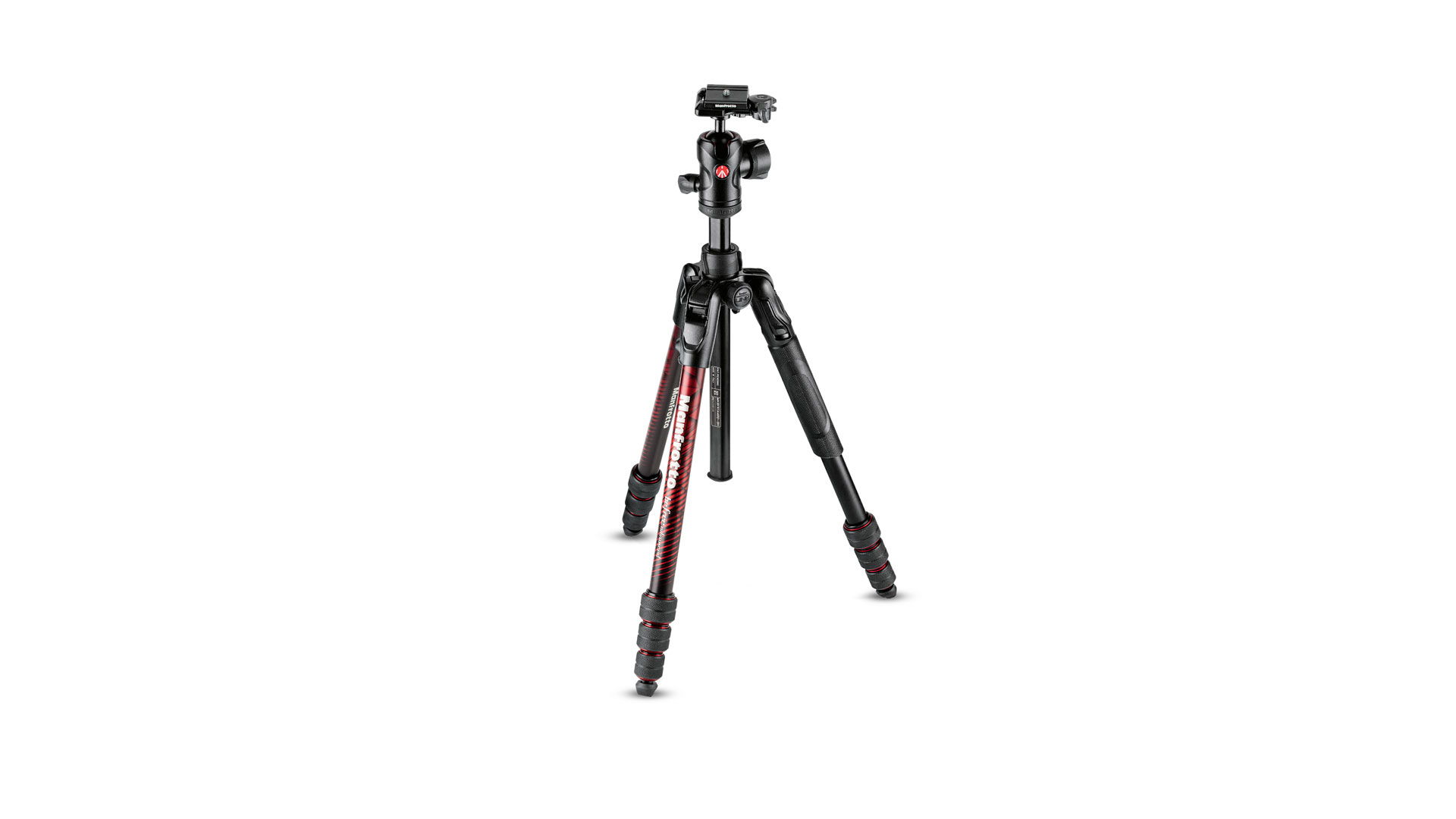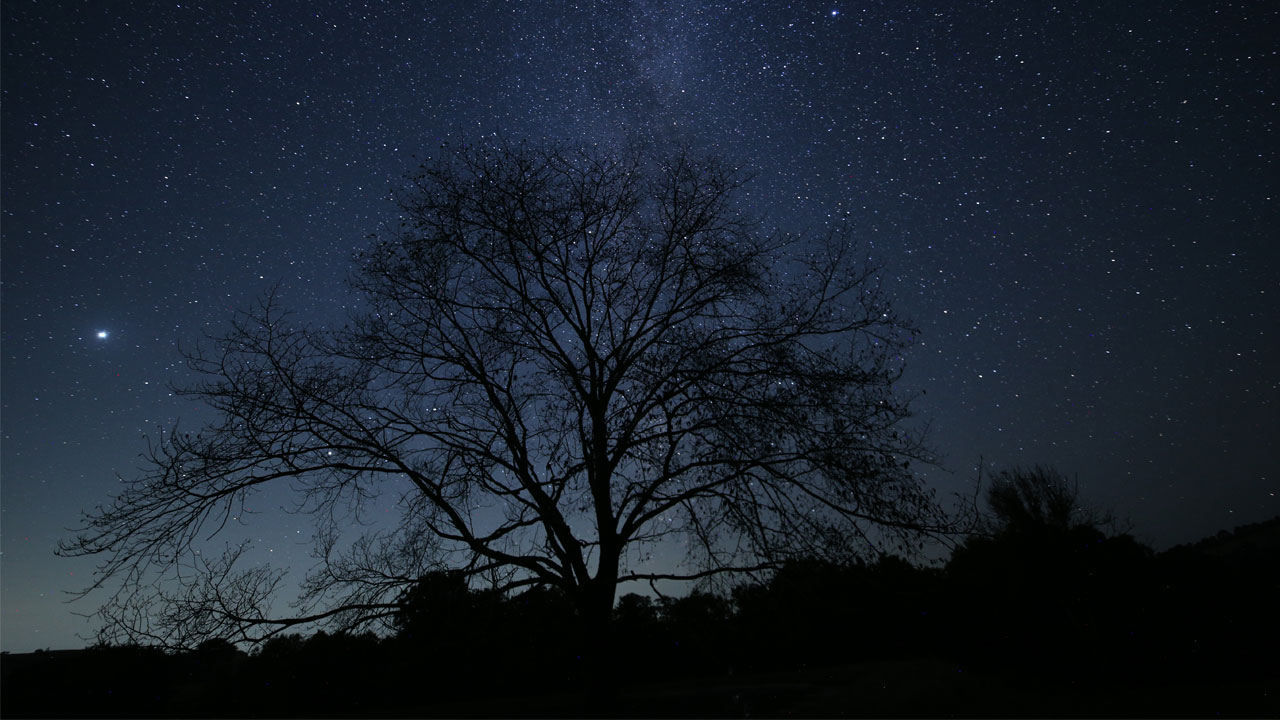Space Verdict
Pros
- +
Lightweight aluminum build
- +
Versatile ball-head
- +
Soft twist leg locks
Cons
- -
Relatively large when collapsed
- -
Not full height
Why you can trust Space.com
Photographers after the perfect tripod to take out at night require three things: a lightweight tripod that is easy to carry, fixings that make it quick to set up and take down, and a solidity and rigidity that can be relied upon to keep one of the best cameras for astrophotography steady even in windy conditions. The Manfrotto Befree Advanced Travel Tripod has all of that, being the lightest aluminum travel tripod we've tried, though perhaps it is not the most efficiently designed for transit.
Although it’s not particularly long at 15.7 inches when closed, it is very wide at 3.7 inches; it consequently takes up a lot of space in luggage. However, what it lacks in space efficiency, it makes up for in exceptional build quality and reliability in the field. This sturdiness is one of the reasons is ranks among our best tripods.
Material: Aluminum
Leg sections: 4
Weight: 3.28 lbs
Max load: 19.48 lbs
Folded height: 15.7 in
Ball head or pan/tilt head: Ball head
With a maximum height of 59 inches, the Manfrotto BeFree Advanced Travel Tripod is not exactly full-size, but then that’s a compromise you have to make with all so-called travel tripods. Another weak point with this genre of tripod is the importance placed on the center column.
Astrophotographers looking to take very long exposure images (for example, a star trail which might last three hours) put a premium on safety, support, and stability, which makes them instantly suspicious of center columns that are very often unsteady. That's not the case with the Manfrotto BeFree Advanced Travel Tripod, simply because the center column has its own fastening mechanism to keep it solid. There’s also an unusual configuration whereby the three legs fold through 180º to meet the ball head on take down, rather than the other way around.
As well as an unusual design for the center column, the Manfrotto BeFree Advanced Travel Tripod – which can take a payload of 19.8 lbs – uses soft rubber rings that hold the extended legs in place and a ball-head that has knobs to keep a camera super-secure in any position.
The perfect blend of lightweight build yet high-end components, the Befree Advanced is an impressive high-end tripod for traveling astrophotographers looking for something solid, quick to set up and take down, and mostly easy to travel with.
Manfrotto BeFree Advanced Travel Tripod review: Design
- 59 (in) max. height
- 15.7 (in) when collapsed
- Excellent ball-head, but makes packing awkward
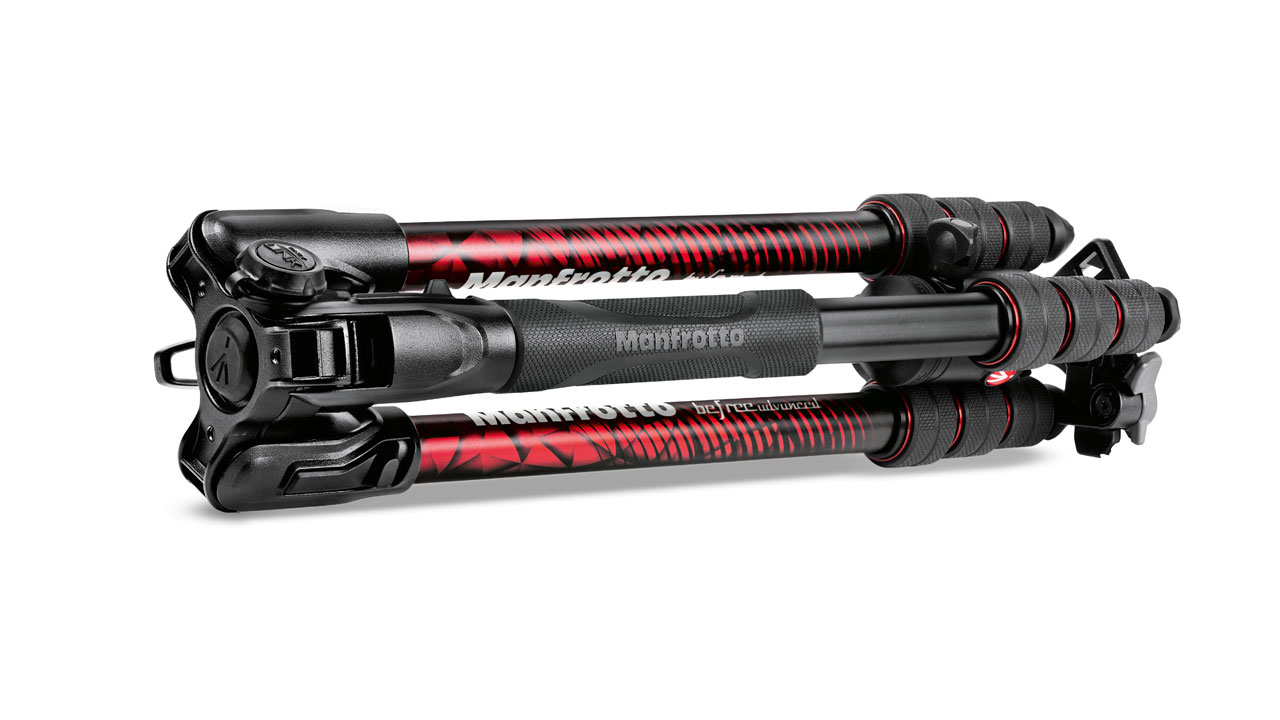
Small carbon fiber tripods may be the lightest around, but being mid-size and made from aluminum the Manfrotto BeFree Advanced Travel Tripod keeps to both a reasonable height and price tag. The tripod has four-section legs and a column that together stretch to a height of 59 inches. That’s just about high enough, though with a DSLR camera mounted on the ball-head and pointing upwards, some people will have to stoop. However, the ball-head itself adds another 5.5 inches.
Breaking space news, the latest updates on rocket launches, skywatching events and more!
That ball-head proves really useful when shooting – the positional flexibility it offers is excellent, and it also has a locking mechanism to make a camera stationary and safe, with no droop – but it does make the Manfrotto BeFree Advanced Travel Tripod slightly awkward to pack. In fact, there are two ways of collapsing the BeFree Advanced for travel and/or transit.
To create as narrow a package as possible for transit it’s best to unscrew the ball-head completely, creating a package that’s 17.3 inches long and 3.7 inches wide, though tapered at one end where the tripod feet are just 2.8 inches wide. The other way, which is 15.7 inches long and 3.7 inches wide at both ends, is achieved by pulling the tripod legs back through 180º to meet the ball-head on the extended center column. That latter configuration is rather unusual, but it works well enough for transporting it in the field, typically strapped to the outside of a camera bag, or in transit using a small carry-on bag.
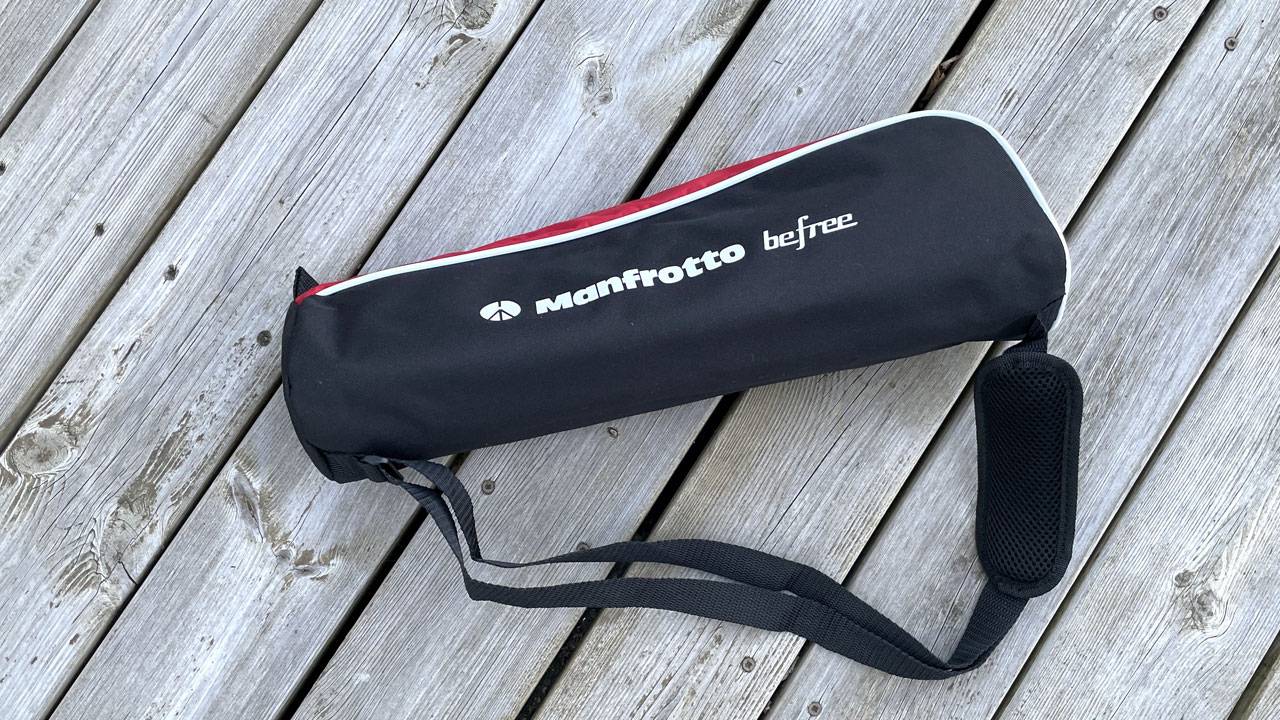
In either collapsed configuration, the Manfrotto BeFree Advanced Travel Tripod isn’t hugely compact in a suitcase, with significant gaps between the legs, so expect to have to squeeze clothes and other soft items around it to maximize space.
Although it’s a design that is best suited to strapping to the outside of a camera bag, it does come in an attractive red and black carry case that has reflective panels and a basic carry strap, complete with a shoulder pad.
There are plenty of other high-end components on the BeFree Advanced, from wraparound twist-lock rings on the leg joins and that excellent ball head, which despite not being at all space-efficient is, at least, easy to use with a camera. In fact, its aluminum 200PL PRO base-plate (which works with both the RC2 and Arca-Swiss plate attachment) fastens to a camera using a D-ring, which can be done anywhere without tools, though can be tightened using an included Allen key. That’s the ideal scenario of both convenience and reliability.
Manfrotto BeFree Advanced Travel Tripod review: Functionality
- Simple and quick set-up and takedown
- Strong center column
- Center column lacks hook
Travel tripods need to be quick to set up and take down, and the Manfrotto BeFree Advanced Travel Tripod offers just that. The four-section legs are easy to use and incredibly versatile, with three angled positions that click into place.

The legs are simple to secure, though they are slightly fiddly to release, so pack-up isn’t quite as rapid as it could be. The leg joins can be secured and loosed using rubber grips, which are easy to turn even with cold or wet fingers. Each leg also has a significant rubber foot with plenty of grip. However, that final extension is always going to be the weakest and where vibrations are possible, so if you want to prioritize absolute stability, don’t extend it.
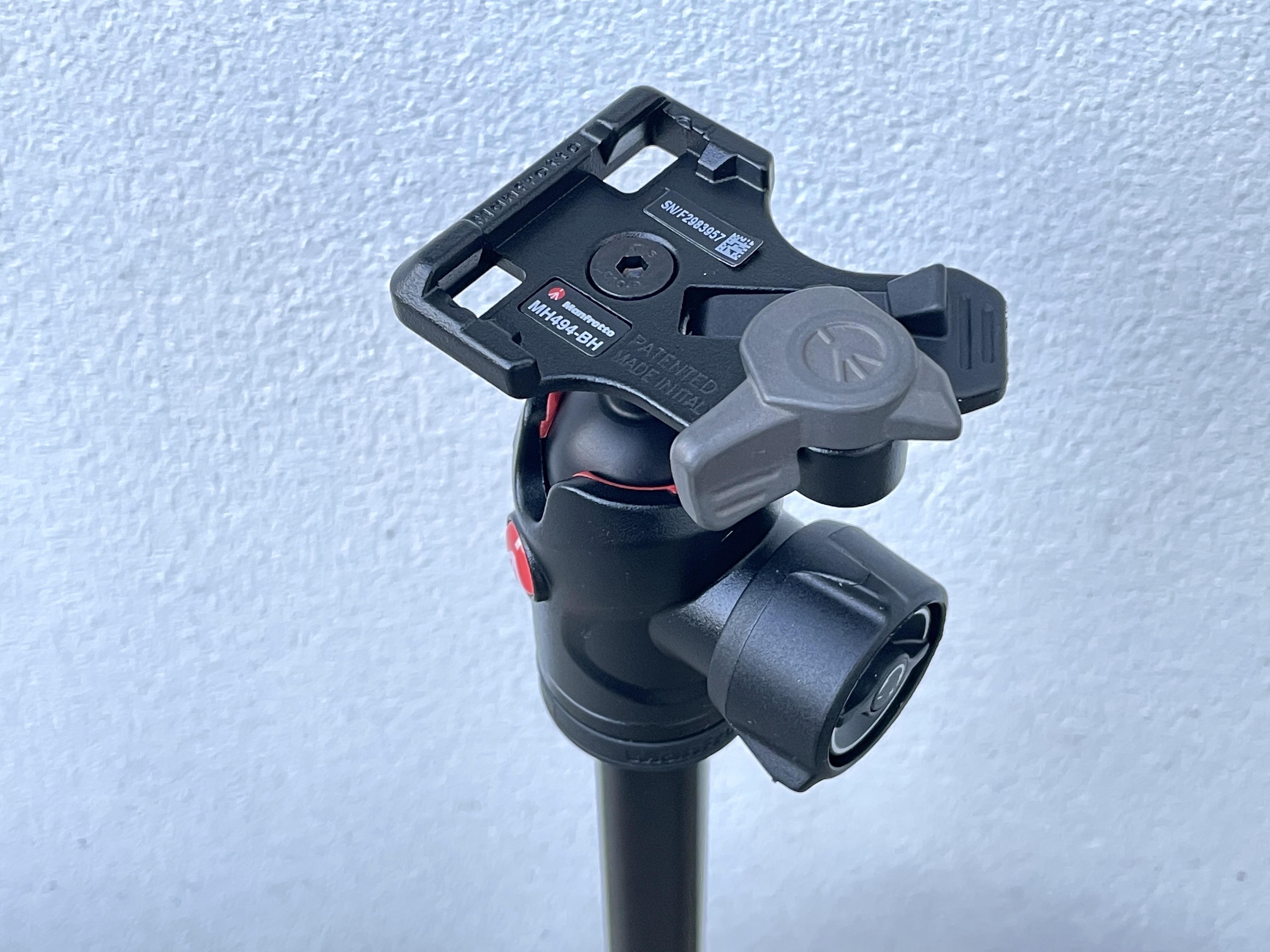
The central column is strong, held in place by a large knob on the join that can easily be tightened and loosened. The ball-head itself has also been improved on previous versions, with this latest incarnation featuring 360º flexibility and some simple to use locking mechanisms once your camera is in position.
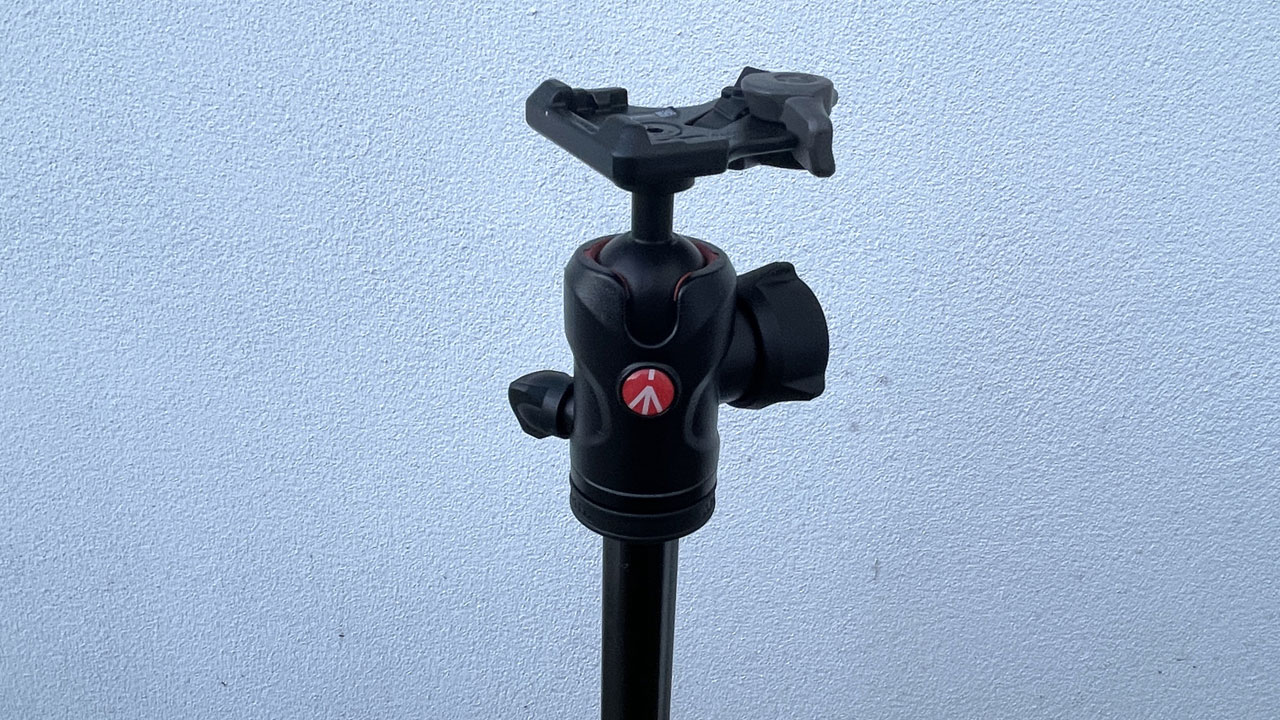
However, just as inserting a camera base-plate into the ball head in the dark takes a little time to master, so too the BeFree Advanced’s ball head takes some getting used to. In fact, several users have reported the ball head getting locked into position with zero movement.
This is classic “didn’t read the instructions” stuff; there’s an inner friction ring in the main knob that regulates the tension of movement while another knob adjusts pan adjustments, but both independently lock the ball head’s movement. It’s not complicated, but it is best mastered before you venture out into the night.
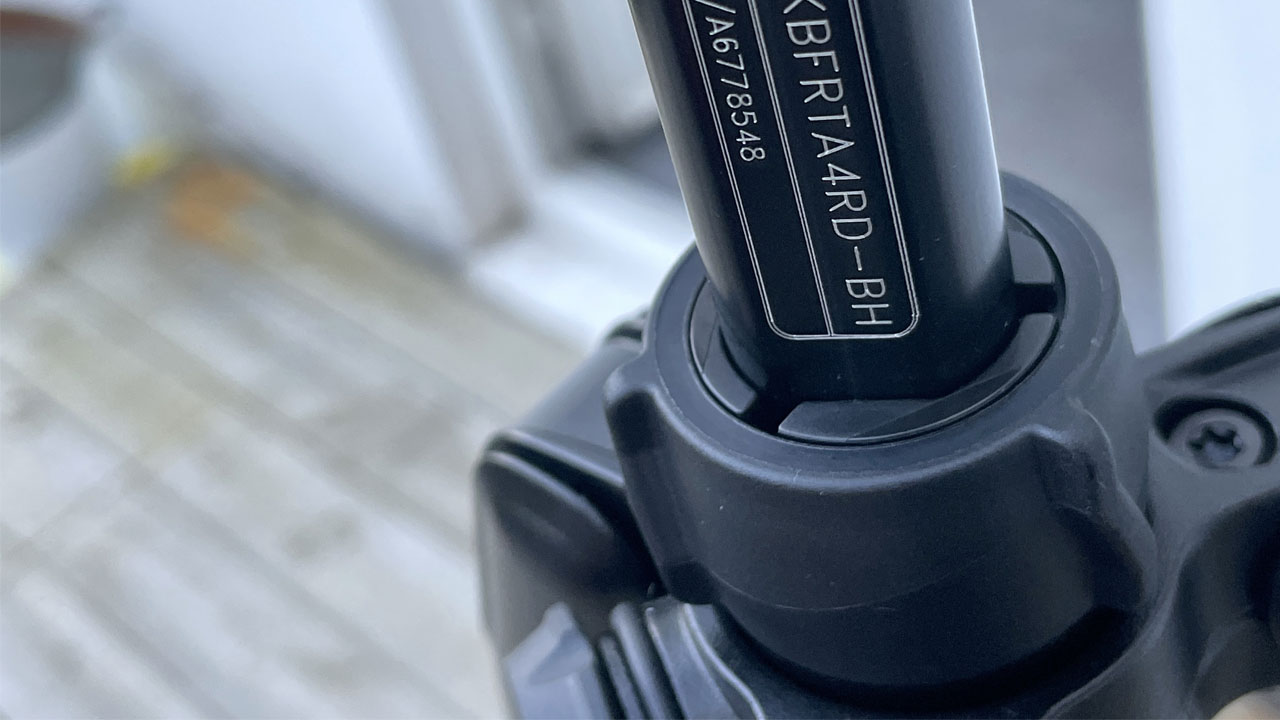
- Related: How to do seascape photography
Should you buy the Manfrotto BeFree Advanced Travel Tripod?
At 3.28 lbs, the Italian-made Manfrotto Befree Advanced Travel Tripod isn’t ultra-lightweight, yet this aluminum travel tripod is not much heavier than its far pricier carbon fiber rivals. As travel tripods go, it’s not as compact when collapsed as others, yet it’s as advanced as any we’ve come across. An excellent quick-release ball head that’s all about flexibility and security, easy-to-use twist legs and a surprisingly strong center column make for a specialist tripod that’s a reliable night companion.
If this product isn’t for you
If you want to go slightly lighter and don’t mind paying a premium price then go for the Manfrotto Befree Advanced Carbon Fibre tripod, which weighs 2.75 lbs.
If you’re after something as light as possible for a compact mirrorless camera and don’t mind having a slightly shorter tripod, try the Vanguard VEO3GO235AB. It weighs just 2.7 lbs and reaches 53.5 inches, but only supports up to 8.8 lbs of gear.

Jamie is an experienced science, technology and travel journalist and stargazer who writes about exploring the night sky, solar and lunar eclipses, moon-gazing, astro-travel, astronomy and space exploration. He is the editor of WhenIsTheNextEclipse.com and author of A Stargazing Program For Beginners, and is a senior contributor at Forbes. His special skill is turning tech-babble into plain English.
